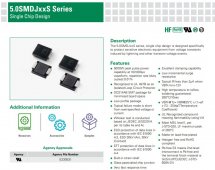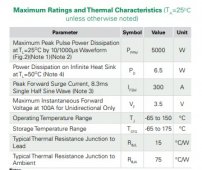@Goboatingnow wrote:
Question: A "common connection" is the same as "no BOTH" is it not? Also "common connection" is not to be confused with the "common post" in the 3 way switch.
I had written that the 3-way switch was "locked" or "lockable". My intentions were not fully described. I am sorry about that.
So rather than asking for clarification about the existence of the "BOTH" position , you declared this configuration "not compatible" and "not a good template".
This template is still "Under Development", and a "DRAFT" (I should have so noted that and will do so from now.)
I appreciate the points and discussion.
I am going to try to digest all the posts above.
@Goboatingnow wrote
I agree that the DC Panel will not be protected as well by the APD even with the Orion DC-DC Charger, and I would like to protect my navigation equipment. Therefore I propose putting a second APD on the DC Panel.
@Goboatingnow wrote:
The DC Panel and loads are quite simple on this boat. The major "low priority" load is Refrigeration, which is easily removed by simply switching off that breaker. I don't believe there is a need to separate and complicate the DC Panel into two panels. When a LFP or BMS issues occur, you can be sure that I will instinctively and immediately reduce loads, if I am present, and I usually leave my DC Panel "off" or at least all the switches "off" when leaving the boat, with the bilge pumps on the "always on" bus. I still have not completely resolved all these details.
I could simply connect the DC Panel directly to the SLA Battery and get a larger Orion DC-DC Charger to accommodate the DC Panel loads. The SLA would protect the DC Panel from any alternator disconnect spikes, however there would be more heat and inefficiency from the increased use of the DC-DC Charger. Then when the BMS / LFP has an issue or failure, essential navigation equipment would remain powered. For some reason, I am reluctant to do this...and prefer using the LFP and then manually switching the DC Panel and Alternator to the SLA.
@Goboatingnow wrote:
Doesn't the requirement to have an advanced disconnect alarm, eliminate the use of the DalyBMS?
Furthermore if there is an advanced disconnect alarm, it can probably be used to switch off the Alternator field current.
Perhaps it is necessary that I use a more expensive BMS? Or perhaps use a Victron Battery Monitor to provide the alarm?
I still have to read and digest all the other good comments and information from Wholybee and others. This is a complex subject and I appreciate all of your experience and guidance.
"to be ISO compliant the 3 way switch should be removed ( or no common connection option allowed )"
Question: A "common connection" is the same as "no BOTH" is it not? Also "common connection" is not to be confused with the "common post" in the 3 way switch.
I had written that the 3-way switch was "locked" or "lockable". My intentions were not fully described. I am sorry about that.
So rather than asking for clarification about the existence of the "BOTH" position , you declared this configuration "not compatible" and "not a good template".
This template is still "Under Development", and a "DRAFT" (I should have so noted that and will do so from now.)
I appreciate the points and discussion.
I am going to try to digest all the posts above.
@Goboatingnow wrote
Yes, BMS advanced or early field coil disconnect is best in my opinion, you have no argument from me about that, however the less expensive DalyBMS does not provide this function. The more expensive REC BMS and TAO BMS do operate this way, however they require additional switching relays or switching FETS and thus more additional costs. I have shown this scheme in other diagrams above (for example) that is why I had suggested looking at the development in this thread.Secondly alternator protection is unnecessary if proper field coil disconnect is present and in An Li system it should always be. Alternator protection can protect the alternator but can fry attached 12v electronics
I agree that the DC Panel will not be protected as well by the APD even with the Orion DC-DC Charger, and I would like to protect my navigation equipment. Therefore I propose putting a second APD on the DC Panel.
@Goboatingnow wrote:
Using the DalyBMS, wouldn't I need the Smart Battery Protect (even if it's BMS switching function was not used) , to prevent the DC Panel from setting off the BMS Low Voltage FET? If the system doesn't really need it and simply using the DalyBMS Low voltage disconnect is OK, that would be a further simplification and cost savings. What would I need simply an advance alarm when the DC Panel has run down the LFP too far?I see no point to the panel associated smart switch. The bms is doing this function anyway. A low voltage Li situation should never realistically occur , if it does regularly the system is sized incorrectly.
A better situation is to break the dc panel into high and low priority loads and to only disconnect low priority loads first but it’s an unnecessary complication
The DC Panel and loads are quite simple on this boat. The major "low priority" load is Refrigeration, which is easily removed by simply switching off that breaker. I don't believe there is a need to separate and complicate the DC Panel into two panels. When a LFP or BMS issues occur, you can be sure that I will instinctively and immediately reduce loads, if I am present, and I usually leave my DC Panel "off" or at least all the switches "off" when leaving the boat, with the bilge pumps on the "always on" bus. I still have not completely resolved all these details.
I could simply connect the DC Panel directly to the SLA Battery and get a larger Orion DC-DC Charger to accommodate the DC Panel loads. The SLA would protect the DC Panel from any alternator disconnect spikes, however there would be more heat and inefficiency from the increased use of the DC-DC Charger. Then when the BMS / LFP has an issue or failure, essential navigation equipment would remain powered. For some reason, I am reluctant to do this...and prefer using the LFP and then manually switching the DC Panel and Alternator to the SLA.
@Goboatingnow wrote:
I would like to meet the ABYC requirements and have a "certifiable" (whatever that is) and professional installation. Given the US Marine industry's fragmentation, this relatively new LFP option and lack of real regulation, I don't believe there would be total agreement on "certifiable". I do not intend to do this until I am sure about what I am doing and why. I am taking the time to get this configured appropriately, then I have to figure out how to fit it all into a very small boat, without messing the boat up.So advance disconnect alarms are a must
Doesn't the requirement to have an advanced disconnect alarm, eliminate the use of the DalyBMS?
Furthermore if there is an advanced disconnect alarm, it can probably be used to switch off the Alternator field current.
Perhaps it is necessary that I use a more expensive BMS? Or perhaps use a Victron Battery Monitor to provide the alarm?
I still have to read and digest all the other good comments and information from Wholybee and others. This is a complex subject and I appreciate all of your experience and guidance.
Last edited:






